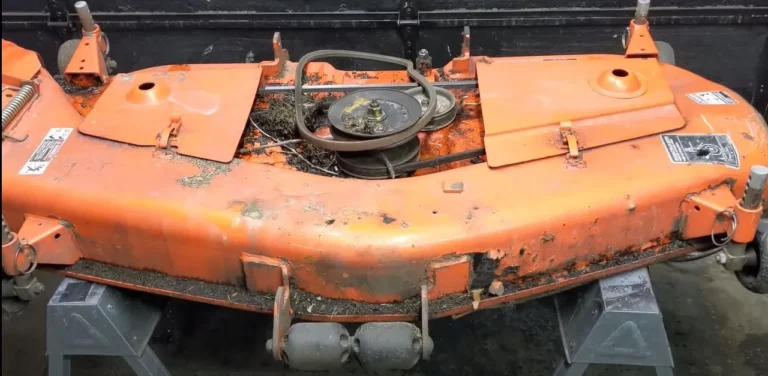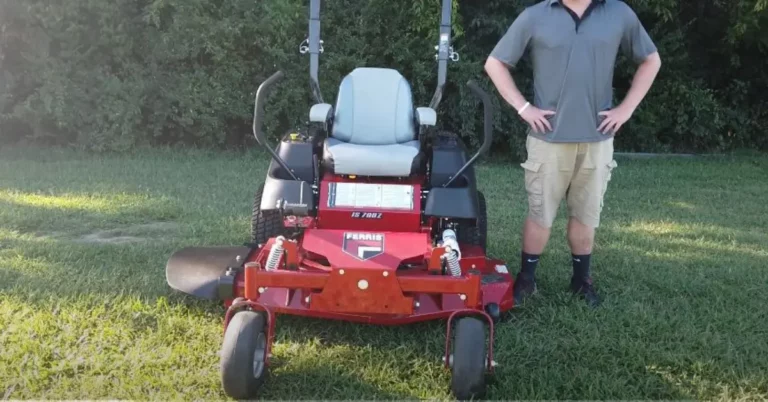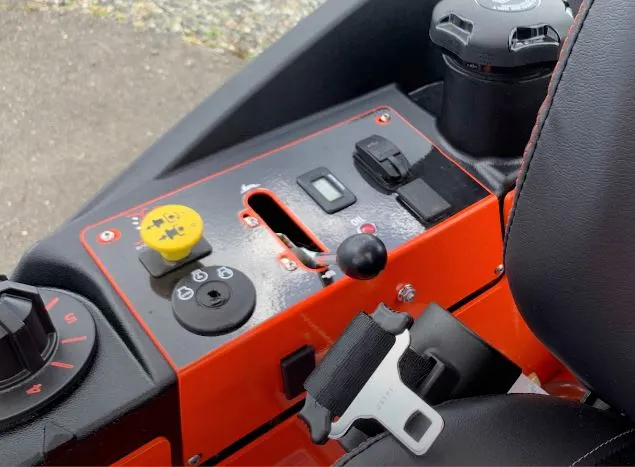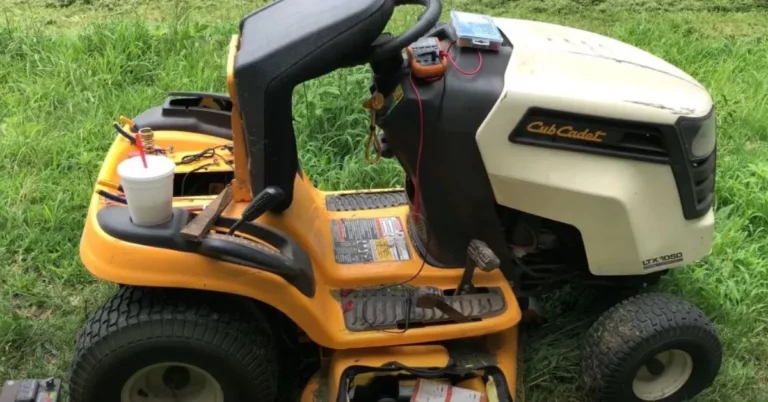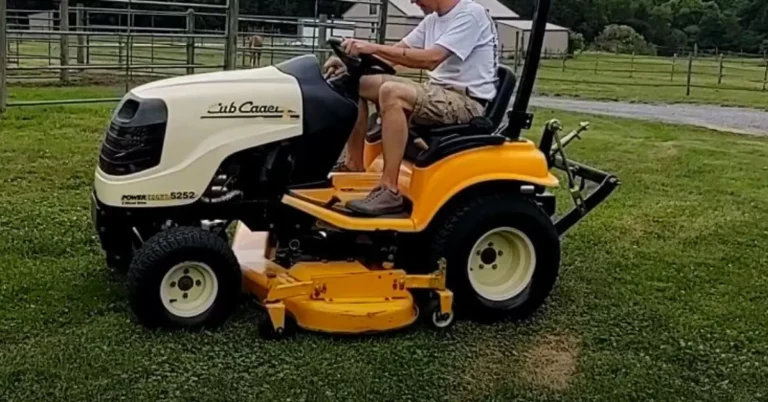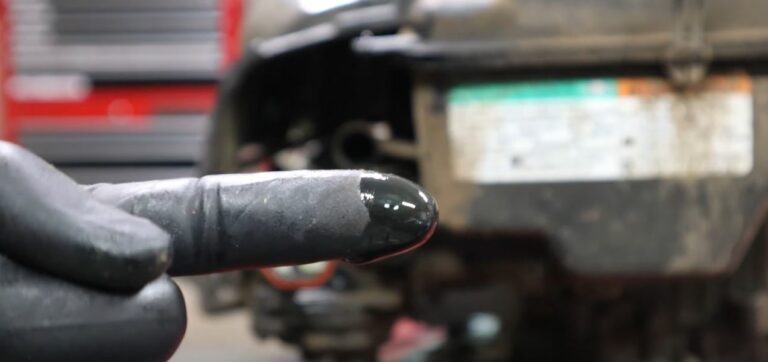Top 6 John Deere 2320 Problems (Let’s Fix Different Issues)
Are you experiencing trouble with your John Deere 2320 but don’t know the problem? Don’t worry; I’ve got you covered.
The John Deere tractor family is known to have problems after some use. These problems can arise due to several factors.
It is important to identify the cause of the problem and fix it immediately to prevent further harm to the machine.
The most common John Deere 2320 problems users face include electrical issues, hydraulic malfunctions, starting problems, fuel system complications, steering difficulties, and overheating.
In this article, I’ll walk you through each problem, its symptoms, and its fixes.
Let’s get started.
6 Common John Deere 2320 Problems
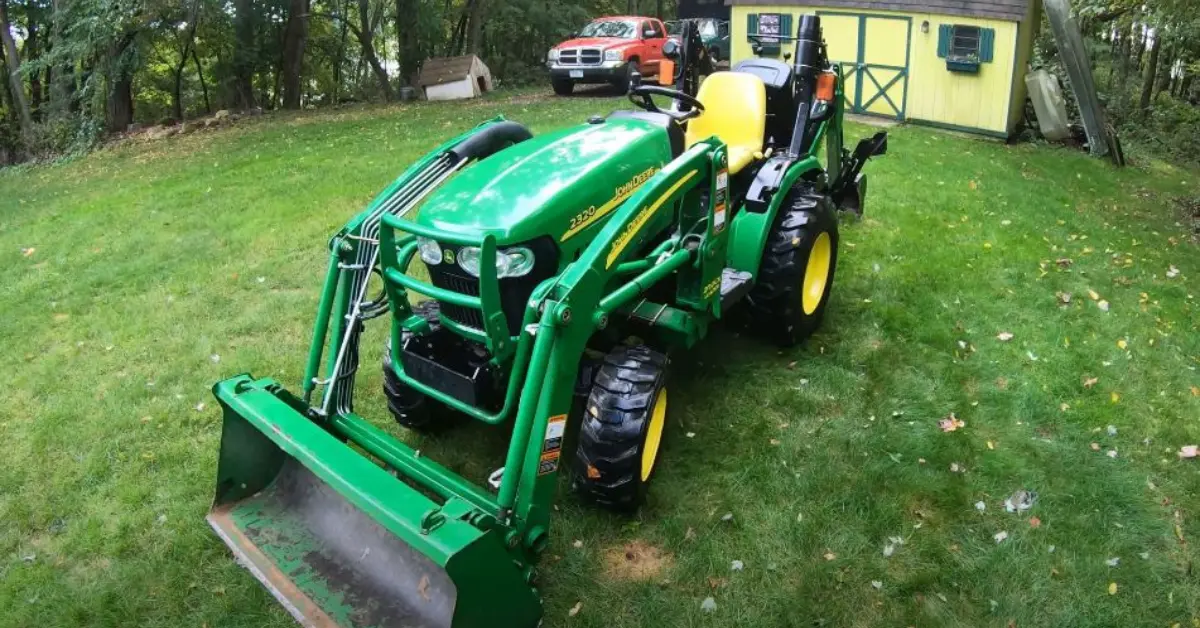
1. Engine Performance Issues
One of the common problems encountered with the John Deere 2320 is engine performance.
Issues with the engine can come up in various ways, such as reduced power, rough idling, or difficulty starting the engine.
If you’re having such issues, here are some possible causes and solutions to consider.
Possible Causes
- Contaminated fuel, clogged filters, or improper fuel mixtures can impact engine performance.
- Faulty spark plugs, loosened wirings, or ignition coils can affect the engine’s ability to generate sufficient power.
- Dirty air filters or restricted air intake can hinder the engine’s airflow, leading to poor performance.
- Worn-out components, such as valves, piston rings, or timing belts, can decrease engine performance.
Solutions
- Check and clean the fuel system, including the fuel tank, lines, and filters. Use clean and high-quality fuel.
- Inspect the ignition system, replacing faulty spark plugs, ignition coils, or wiring as needed.
- Maintain proper airflow to the engine by routinely cleaning or replacing the air filter.
- Perform routine maintenance, including checking and adjusting valve clearances, inspecting timing belts, and addressing any mechanical issues identified.
Also Read: John Deere Z665 Problems (How To Fix Them Immediately?)
2. Hydraulic System Malfunctions
The hydraulic system plays a vital role in the operation of the tractor, powering various attachments and providing essential functions like lifting and lowering.
However, malfunctions in the hydraulic system can disrupt its performance and affect the overall functionality of the tractor.
Possible Causes
- Insufficient fluid can lead to reduced hydraulic pressure and inefficient operation.
- Dirt, debris, or water entering the hydraulic system can cause blockages and component damage.
- Leaks or cracks in the hoses can result in pressure and fluid loss in the hydraulic system.
- Malfunctioning valves or cylinders can cause improper operation, including slow or uneven movements.
Solutions
- Maintain a consistent check on the hydraulic fluid level and fill it up as required with one of the recommended fluids listed in the tractor’s manual.
- Inspect and replace the hydraulic fluid if it appears dirty or contaminated. Dispose of the old fluid according to environmental regulations.
- Look for any signs of damage on the hydraulic hoses, and replace them as necessary. Ensure proper routing and connections.
3. Electrical System Failures
The electrical system in the tractor is responsible for powering various components, including lights, gauges, ignition, and accessories.
When the electrical system experiences, failures can lead to various issues, affecting the tractor’s performance and functionality.
Possible Causes
- A worn-out or discharged battery can result in a loss of power and prevent the tractor from starting or operating properly.
- Damaged or loose wiring and connections can disrupt the flow of electricity, causing temporary or complete electrical failures.
- Overloaded circuits, short circuits, or component failures can cause fuses or relays to blow, cutting power off specific electrical systems.
Solutions
- Make sure the battery voltage is within the recommended range. Replace the battery if the voltage levels are not up to the mark, and keep it properly charged and maintained.
- Inspect the wiring harness and connectors for any indications of corrosion. Repair or replace any of these wires if they are faulty.
- Test the alternator and voltage regulator using appropriate diagnostic tools. Replace any faulty components and ensure proper charging of the battery.
- Check the fuses and relays in the electrical system. Replace blown fuses and faulty relays with the correct specifications.
4. Transmission Problems
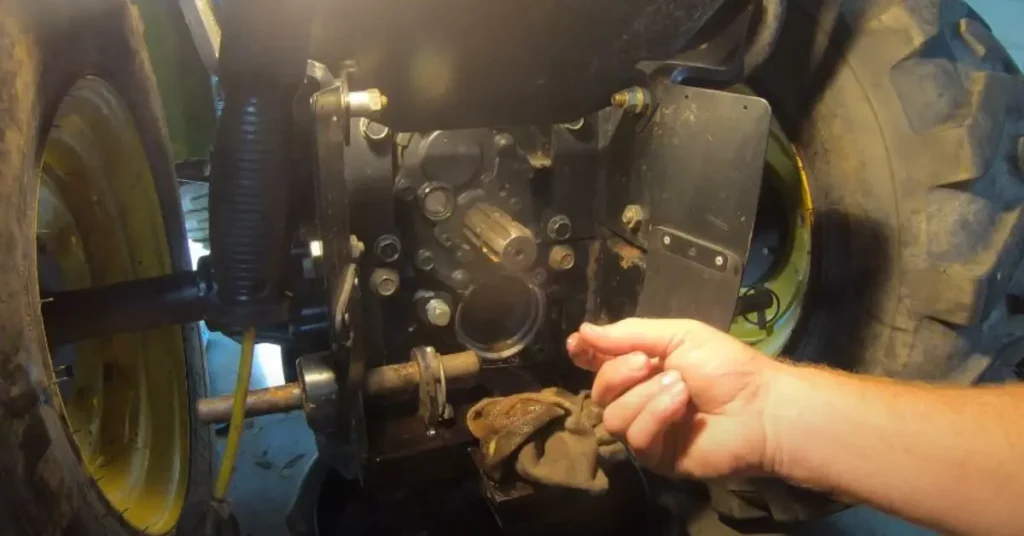
The transmission is an essential component of the tractor that allows for smooth power transfer and efficient operation.
However, various issues can arise with the transmission, leading to reduced performance, gear-shifting problems, and overall drivability concerns.
Possible Causes
- Insufficient or old and contaminated transmission fluid can cause bad lubrication. This increases friction, heat, and potential damage to the transmission components.
- A worn-out clutch or clutch linkage can lead to difficulty in engaging or disengaging gears, causing slipping, grinding, or hesitation during gear shifting.
- Malfunctioning solenoids can disrupt the flow of hydraulic pressure within the transmission, causing erratic shifting or failure to engage gears.
- Damaged or worn transmission belts or pulleys can result in slipping, reduced power transfer, or failure to engage gears properly.
Solutions
- Check the transmission fluid level and condition regularly, ensuring it is at the appropriate level and free from contaminants.
- Inspect the clutch system for indications of wear. Replace damaged components and adjust the clutch properly to ensure smooth gear engagement.
- Test the transmission motor using diagnostic tools. Replace or repair any faulty components and ensure proper hydraulic system operation.
- Inspect the transmission belts for wear, damage, or misalignment. Replace any worn-out or damaged components, apply proper tension, and set the alignment of the belts.
Also Read: John Deere 100 Series Transmission Problems – Fixed!
5. Steering System Issues
The steering system of the John Deere 2320 is responsible for the control of the tractor.
When problems arise with the steering system can affect the operator’s ability to steer accurately and safely.
Possible Causes
- Low fluid levels or contaminated fluid can interfere with the smooth operation of the power steering system, resulting in difficulty turning the wheels. The operator has to put in increased steering effort.
- A damaged or loose steering belt or pulleys can cause slipping or inadequate power transfer, reducing steering control.
- A malfunctioning steering pump can make it challenging to turn the wheels smoothly.
Solutions
- Check the power steering fluid level and condition regularly, ensuring it is within the recommended range and free from contaminants.
- Look for any damage to the steering system’s parts.
- Replace or repair worn-out parts and ensure proper alignment and tightness of the linkages.
- Test the steering pump for proper operation. If the pump is faulty, it may need to be repaired or replaced to restore adequate power assistance.
6. Braking System Concerns
The braking system of the John Deere 2320 tractor may encounter issues that compromise its effectiveness and safety.
Possible Causes
- The brake pad grip gets worn out over time. The tractor may experience bad braking due to this reduced brake pad grip.
- Damaged or misaligned brake linkages can get in the way of the proper brakes, resulting in reduced power of the whole braking system.
- Any malfunction in the hydraulic system, such as leaks or insufficient pressure, can affect the performance of the brakes.
Solutions
- Look for wear on the brake pads. Replace them if they are beyond repair, as brakes are a sensitive subject in the vehicle.
- Check the brake fluid level and quality. If the fluid appears dirty or contains moisture, it should be cleaned or replaced with fresh brake fluid according to the manufacturer’s guidelines.
- Inspect the brake linkages for any damage or misalignment. If necessary, fix or replace the damaged parts to get the brakes working again.
Maintenance Tips for John Deere 2320
Proper maintenance is key to keeping your John Deere 2320 tractor in optimal condition and preventing potential problems.
Here are some essential maintenance tips:
1. Check and change fluids regularly
Regularly inspect and maintain the levels of engine oil, coolant, hydraulic fluid, and other fluids. To ensure peak performance, top off the fluids at the suggested intervals.
2. Inspect and replace filters
Regularly check and clean or, if necessary, replace the air, fuel, and oil filters. Filters that are clogged or dirty can restrict airflow and reduce engine efficiency.
3. Check the battery
Regularly check the battery for corrosion, faulty connections, and sufficient voltage. Clean the battery terminals and cables, and ensure they are securely tightened.
4. Keep the tractor clean
Regularly clean the tractor’s exterior, including the mower deck and the chassis, to prevent the buildup of debris and grass clippings that can impede performance and cause damage.
Also Read: John Deere 1026R Problems? With a Solution Guide
Frequently Asked Questions (FAQs)
How often should the engine oil in John Deere 2320 tractor be changed?
The engine oil should be changed per the manufacturer’s recommendations, typically every 100-200 hours of operation or once a year. For detailed instructions, consult the owner’s manual.
Can I use third-party filters for my John Deere 2320?
You should use genuine John Deere filters for optimal performance and compatibility.
Third-party-bought filters may not meet the same quality standards and could affect the tractor’s performance.
What should I do if my tractor’s battery keeps draining?
If you experience frequent battery drain, check for possible causes such as lights or accessories left on, loose battery connections, or a faulty charging system.
If the issue persists, it is advisable to consult a qualified technician for further diagnosis and assistance.
Conclusion
Addressing and resolving the problems that may arise with the John Deere 2320 tractor is crucial for maintaining its performance and reliability.
Proper maintenance practices and promptly addressing issues can ensure your tractor’s long life and optimal functioning.
In a nutshell, keep the tractor in a clean and dry spot when it’s not in use. Avoid exposing it to high temperatures, moisture, and other environmental elements that might cause rust or corrosion.

